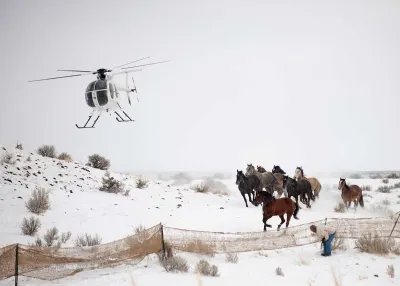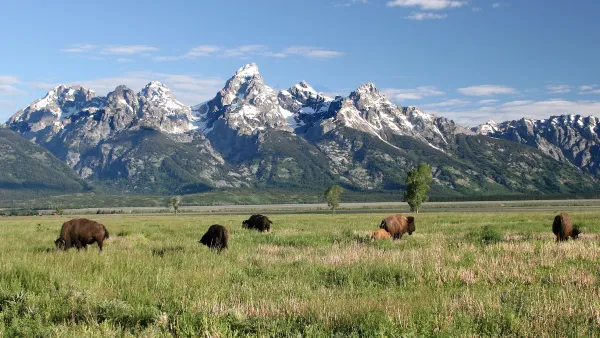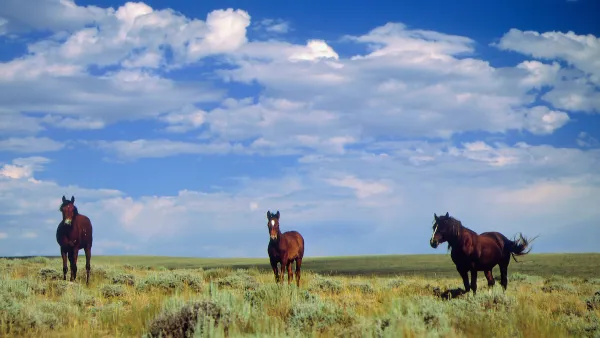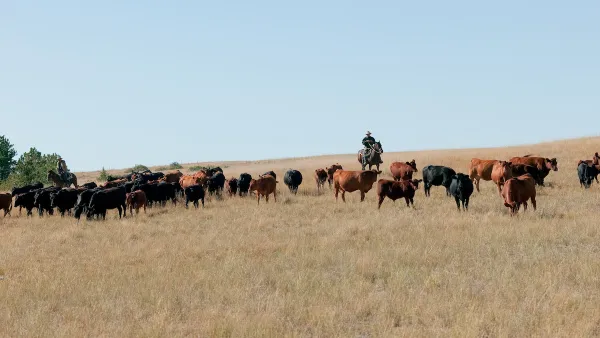Tens of thousands of wild horses still inhabit the western states. The Bureau of Land Management is caught between two camps: ranchers who want them contained and advocates who want them to roam free.

James McWilliams covers a rural land use drama: how to handle thousands of free-ranging wild horses. Currently, the Bureau of Land Management (BLM) contains many of the animals and attempts to control their movements. "The primary reason they're confined is the nearly 18,000 ranchers grazing an estimated 747,963 'animal units'—a bureaucratic term that can represent either a horse, a cow/calf pair, or five sheep—on 155 million acres of land."
Ranchers must compete with the horses for forage opportunities, a difficult task during drought. "They view the remaining 58,150 mustangs and burros roaming wild across 10 western states as invasive pests who gorge on precious forage and trample the landscape into hardpan."
Since the 1971 Wild Free-Roaming Horses and Burros Act, the BLM has been charged with protection and management of wild herds on federal land. "Because the BLM also issues grazing allotments to private ranchers [...] the agency is entrusted to balance wild horse and cattle populations on land where these animals overlap."
Many ranchers argue for drastic measures to contain the horses. But advocates say they're exaggerating the problem. "Of all the public grazing land the BLM manages (155 million acres), wild horses are technically allowed to graze on only 17 percent of it."
FULL STORY: Western Cattlemen Square Off Against 60,000 Mustangs

National Parks Layoffs Will Cause Communities to Lose Billions
Thousands of essential park workers were laid off this week, just before the busy spring break season.

Retro-silient?: America’s First “Eco-burb,” The Woodlands Turns 50
A master-planned community north of Houston offers lessons on green infrastructure and resilient design, but falls short of its founder’s lofty affordability and walkability goals.

Delivering for America Plan Will Downgrade Mail Service in at Least 49.5 Percent of Zip Codes
Republican and Democrat lawmakers criticize the plan for its disproportionate negative impact on rural communities.

Test News Post 1
This is a summary

Test News Headline 46
Test for the image on the front page.

Balancing Bombs and Butterflies: How the National Guard Protects a Rare Species
The National Guard at Fort Indiantown Gap uses GIS technology and land management strategies to balance military training with conservation efforts, ensuring the survival of the rare eastern regal fritillary butterfly.
Urban Design for Planners 1: Software Tools
This six-course series explores essential urban design concepts using open source software and equips planners with the tools they need to participate fully in the urban design process.
Planning for Universal Design
Learn the tools for implementing Universal Design in planning regulations.
EMC Planning Group, Inc.
Planetizen
Planetizen
Mpact (formerly Rail~Volution)
Great Falls Development Authority, Inc.
HUDs Office of Policy Development and Research
NYU Wagner Graduate School of Public Service





























